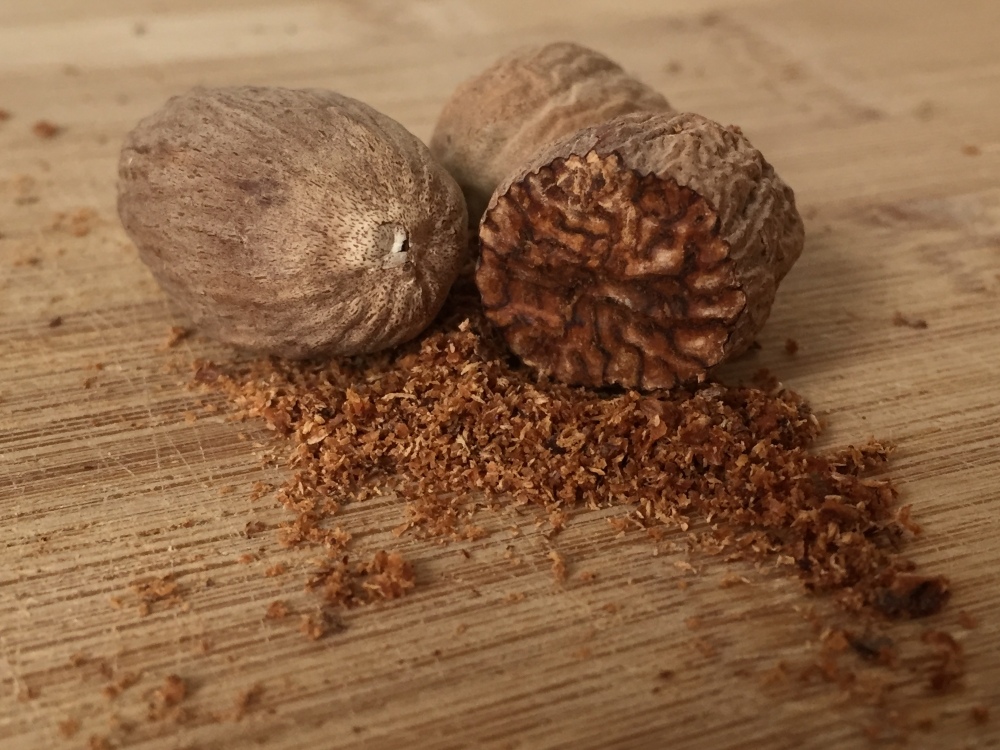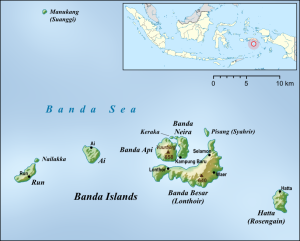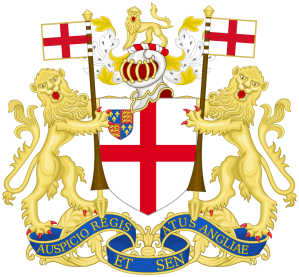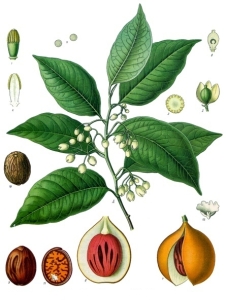
In 1609, Nathaniel Courthope was sent by the English East India Company to Indonesia to help secure their share of the lucrative spice trade. In particular, to wrest control of the nutmeg trees that grew in the Banda Islands from the Dutch East India Company (V.O.C.). This aromatic spice was so valuable, it eventually won the British the island of Manhattan.
WHERE IS NUTMEG FROM?
Nutmegs are the seeds of the Myristica fragrans tree, an evergreen that can produce fruit for up to 100 years. Mace is the aril, or lacy covering, of the nutmeg seeds.

Nutmeg originates in the Banda Islands, in the Moluccas or ‘Spice Islands’ of Indonesia. Nutmeg was used in the embalming oils of Egyptian mummies, and the Roman Pliny the Elder had written about the spice in the first century AD (although he may have actually mistaken it for cinnamon!).
Europeans have been enamored of it since at least the 12th century. Nutmeg’s value to the rise of the European powers was illustrated by the fact that many battles were waged between the Portuguese, the British and the Dutch for control of the Spice Islands.

Back in the 1600s, an outnumbered and embattled Nathaniel Courthope withstood a siege on the small island of Run by the Dutch that lasted 1,540 days. He was protecting the British claim to the island, which was very densely covered with the valuable nutmeg trees. But all to no avail. The Dutch eventually killed Courthope in a surprise attack, and shortly afterwards the British abandoned the island to the control of the Dutch. Ironic then, that after the Second Anglo-Dutch War in 1667, a deal was struck in which the Dutch swapped the island of Manhattan for the tiny island of Run.
MEDICINAL USES:
An aphrodisiac?
There have been many medical claims for nutmeg through the centuries from protecting against the plague, to causing hallucinations, to curing flatulence. Some have since been proved correct, such the spice’s aphrodisiac properties. A 2005 study conducted on rats shows that this is indeed the case, increasing both libido and potency.
Hallucinogenic?
Whether or not nutmeg could ward off the plague, in large doses it is a hallucinogen. Nutmeg contains the compounds elemicin and myristicin which the body metabolizes into amphetamine-like substances.
Essential oils made from nutmeg is used these days to alleviate stress and stimulate the brain. It can be used as a counter-irritant, and to relieve symptoms of rheumatism.

In small doses nutmeg can have stimulant, narcotic, anti-fungal, and anti-inflammatory effects, and can be used to prevent blood clots, and to cure vomiting.
Large doses, however, may have some negative side effects, such as nausea, vomiting, elevated heart rate and dry mouth. So, just put a sprinkle on your eggnog, not a tablespoon!
FOOD
Nutmeg has long been known to have antimicrobial properties, and can extend the life of food and drink to which it is added, not to mention improve the flavour.
It is used a lot in baking these days, and can make a cup of hot chocolate just that little bit more special. Try my Easy Apple Crumble, and see what you think!
FURTHER READING
To learn more about the trade of nutmeg and the story of Nathaniel Courthope, I highly recommend Giles Milton’s great book Nathaniel’s Nutmeg, Or, The True and Incredible Adventures of the Spice Trader who Changed the Course of History.
Very informative! I learned things about spices I never thought I needed to know.
LikeLike
Glad you enjoyed it.
LikeLike